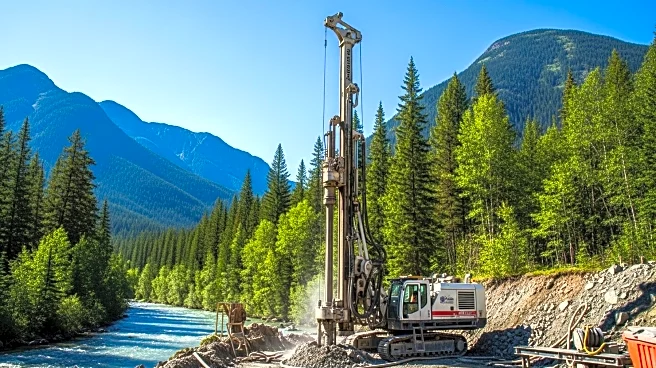What's Happening?
Star Copper, a mineral exploration company, is preparing to launch a phase two drilling program at its Star Project in British Columbia, Canada. This follows the completion of a phase one drilling program aimed at understanding the mineralization and structural orientation of the project. The phase one program confirmed copper mineralization across multiple intrusive phases and expanded the supergene mineralized footprint by 75 meters to the southwest. The upcoming phase two program, scheduled for fall 2025, will focus on targeted stepouts and deeper tests at Star Main, along with exploratory holes at Star North and Copper Creek. These efforts are intended to expand the copper footprint and unlock new discovery potential across the property.
Why It's Important?
The advancement to phase two of the Star Project is significant for the mining industry, particularly in the context of copper exploration. Copper is a critical component in various industries, including electronics and renewable energy, making its discovery and extraction vital for economic growth. The expansion of the copper footprint in British Columbia could lead to increased resource availability, potentially benefiting local economies and contributing to global copper supply. Additionally, successful exploration could attract further investment into the region, enhancing its reputation as a hub for mineral resources.
What's Next?
As Star Copper moves into phase two, the company will likely focus on refining its exploration techniques to maximize the potential of the Star Project. The results from the phase two drilling will be crucial in determining the next steps, including potential expansion or further investment. Stakeholders, including investors and local communities, will be watching closely to see how the project develops and what economic opportunities it might bring. The company may also engage with regulatory bodies to ensure compliance with environmental and mining standards.
Beyond the Headlines
The Star Project's development could have broader implications for environmental and regulatory practices in mining. As exploration activities increase, there may be heightened scrutiny on the environmental impact and sustainability of mining operations. This could lead to discussions on balancing resource extraction with ecological preservation, influencing future mining policies and practices. Additionally, the project's success could inspire other companies to explore similar opportunities in the region, potentially leading to a surge in mining activities and associated economic growth.











